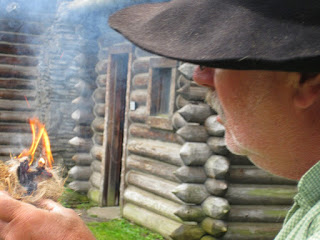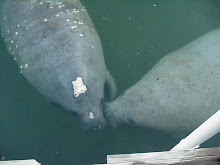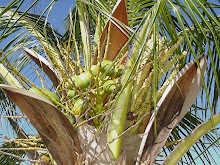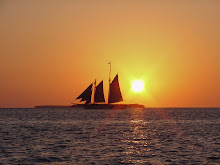The Colonel and I could not wait to visit the Fort Boonesborough facsimile. We were among the first visitors at the fort's open gates.
As we paid for our tickets, we were told that a couple school buses were due to arrive within the half hour. The Colonel and I thanked the ticket seller for the heads-up and quickly entered the fort and began our tour. We wanted to see as much as we could sans schoolkids.
In a previous post, I wrote a little about the history of Fort Boonesborough. All that remains is a granite marker that bears the names of the settlers and marks the location of the fort. This facsimile of Fort Boonesborough was built here, above to original fort site and out of the flood plain of the Kentucky River. I will not go into the history of the fort here. This post is about experiencing what the original fort would have looked like and what life would have been like for the early settlers of Kentucky.
This is a drawing of the original Fort Boonesborough:
This is what the Colonel and I saw when we first entered the facsimile fort:
We saw a man in a felt hat who showed us how the early settlers started a fire with flint and metal.
He took the C-shaped piece of metal and struck it against some flint. The flint had a bit of char on top of it. A tiny spark was created when he struck metal to flint and that spark landed on the char. He put the spark-laden char on some tow.
He gently blew on the tiny spark that was nestled upon the tow material and flames jumped out immediately.
The Colonel and I were so impressed that we purchased a metal striker, flint, char and tow from the gift shop before we left and tried it at home. We made fire...just not as quickly as the man above.
There was a short video that was shown in one of the corner block houses. It was about Fort Boonesborough, Daniel Boone and the Kentucky Wilderness. Well, done and very informative.
After watching the video The Colonel and I began our self-guided tour of the fort in earnest (remember, busloads of school kids were hot on our trail).
The first cabin we looked into was representative of what pioneers would expect to live in when they arrived at the fort (dirt floor, no off-the-floor bed). The next two cabins showed improvements. The cabins' comfort levels increased over time as the early settlers made or bought furniture and other household goods.
As The Colonel and I walked around the fort we stopped inside other cabins where we saw artisans at work. We saw a spinner, potter, soap maker and candle maker.
We looked into the tavern/store. I could just see Cincinnatus from the Daniel Boone television show serving up some whiskey to a weary traveler.
We saw a painting in one of the blockhouses that showed what Fort Boonesborough would have looked like in the Kentucky wilderness. It was a nice painting.
It was even nicer to be able to walk through a replica of Fort Boonesborough and imagine what Daniel Boone lived like and all those who came into Kentucky after him.
Our tour of Fort Boonesborough was coming to a close and it was now time to say farewell to this leg of our trip. Our next stop in Kentucky would be at a famous restaurant for a finger-lickin' good lunch.





































































No comments:
Post a Comment